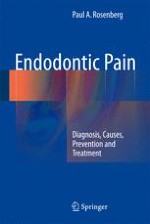2014 | Boek
Over dit boek
Endodontic pain is a complex symptom that poses unique challenges for the dentist. This book is a concise, well-structured guide to the assessment and treatment of patients who present with endodontic pain, in which step-by-step descriptions are complemented by informative images and flow charts. The advantages, disadvantages, and significance of specific diagnostic and treatment procedures are clearly described, as is a pharmacotherapeutic approach to the prevention and treatment of pain. In addition, the causes and biological basis of endodontic pain are explained and guidance is provided on further strategies for pain prevention. The crisp narrative, efficient design and visual detail are notable features of this book that will make it an ideal chairside resource for the clinician and a dependable reference for the student.
